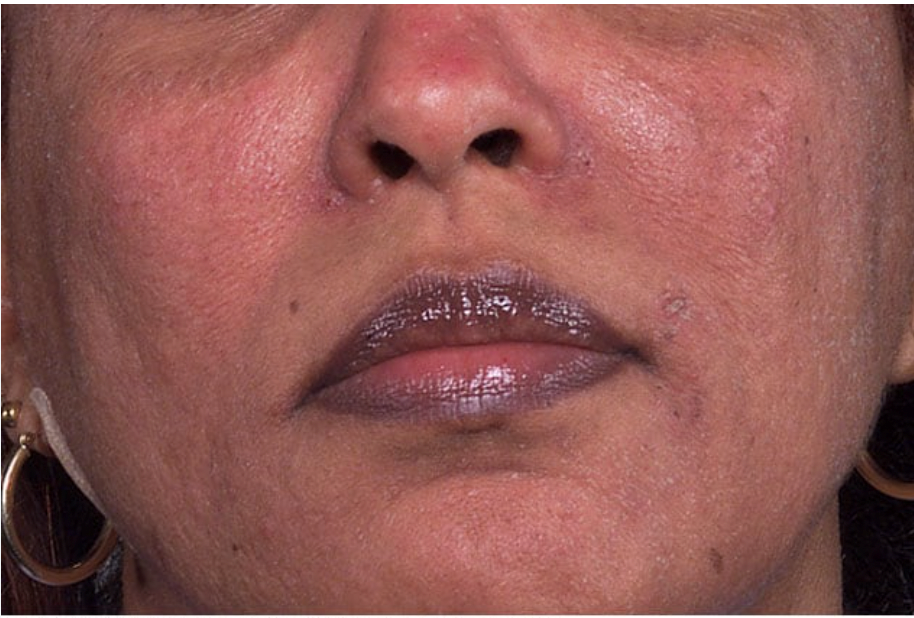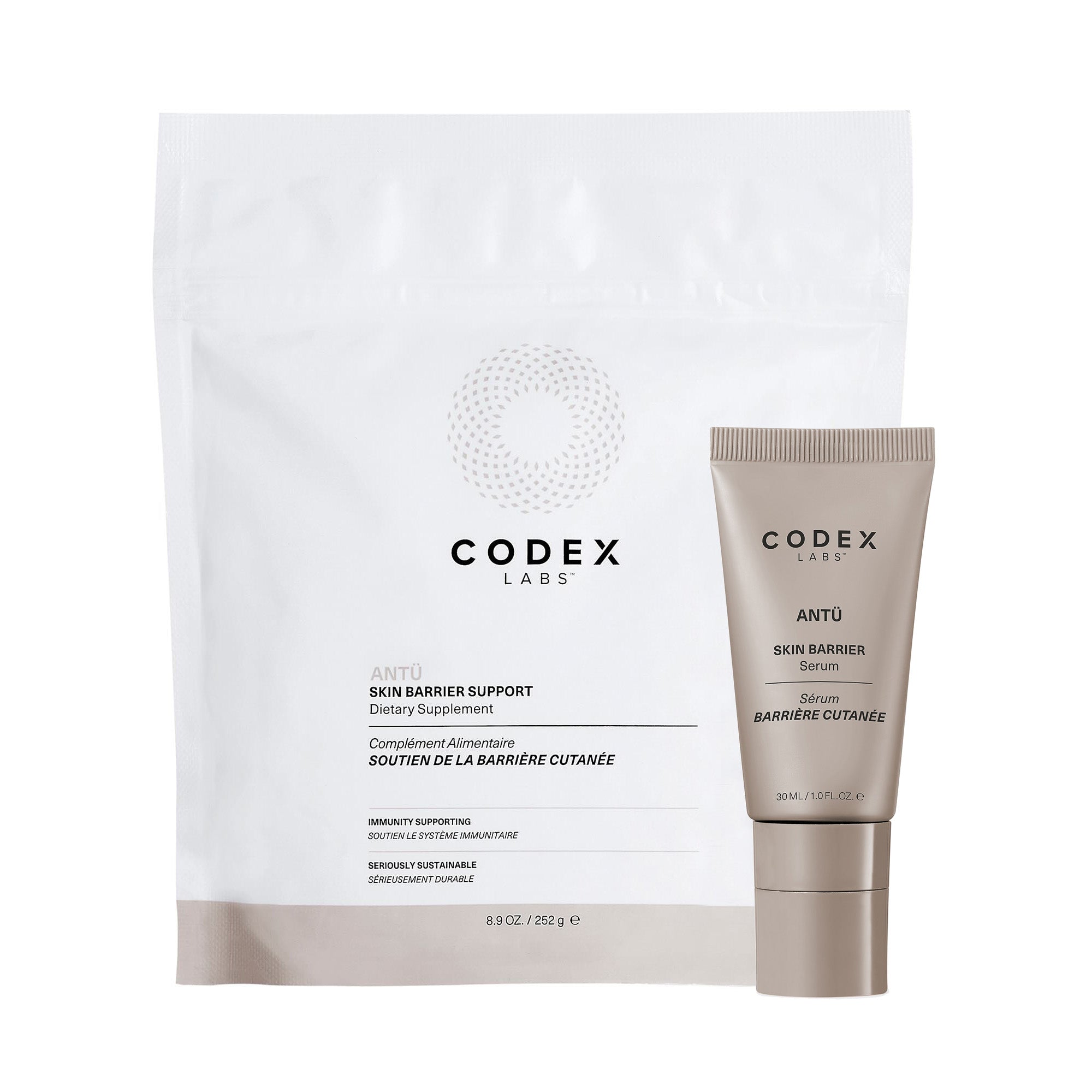Rosacea is a chronic skin condition that affects millions of people worldwide. Its symptoms include redness, swelling, and visible blood vessels which are typically observed on the face, but it can certainly affect other areas as well. While rosacea doesn’t discriminate based on a person’s age or gender, it tends to be more prevalent in fair-skinned individuals, particularly women over the age of 30. Rosacea is not a one-size-fits-all condition; there are several different types of rosacea, and each can be triggered by different factors.
In this comprehensive guide, we’ll dive into the various types of rosacea, explore their common triggers, and answer some of the most frequently asked questions concerning this inflammatory skin condition. Whether you’ve just been diagnosed or have been dealing with rosacea for years, understanding what can trigger rosacea and how to manage it is key to keeping flare-ups at bay.

What Are the Different Types of Rosacea? [1]
Before diving into the triggers, it’s essential to first understand that rosacea can manifest in various forms. The four primary types of rosacea include:
- Erythematotelangiectatic Rosacea (ETR) – This is the most common type of rosacea and is primarily associated with persistent skin redness and the appearance of visible blood vessels. It may also cause swelling and trigger a stinging and/or burning sensation on the skin.
- Papulopustular Rosacea – Often confused with acne, this type of rosacea is characterized by red bumps (papules) and pus-filled pimples (pustules). Unlike acne, it doesn’t take on the appearance of blackheads or whiteheads, and typically flares-up in cycles.
- Phymatous Rosacea – This less common form causes the skin to thicken and often affects the nose area, giving it a bulbous-type of appearance (a condition known as rhinophyma). It’s more common in men than in women.
- Ocular Rosacea – Affecting the eye area, this type of rosacea causes redness, irritation, and swelling around the eyes. In severe cases, it can lead to vision problems.
Because each type of rosacea has its own unique triggers and symptoms, specific treatment strategies are required to effectively manage each rosacea type.
What Can Trigger Rosacea? [2]
While the precise cause of rosacea is still unknown, there are a variety of genetic and environmental factors that alone, and/or in combination, play a significant role in this condition’s development. Although rosacea triggers can vary from person to person, understanding common factors can help to manage flare-ups. Below are some common rosacea triggers for different individuals:
- Sun Exposure: UV rays are a notorious trigger for rosacea. For many people, sun exposure can exacerbate the redness associated with ETR and papulopustular rosacea. Using a broad-spectrum sunscreen daily is crucially important for helping to manage rosacea symptoms, even on cloudy days.
- Extreme Temperatures: Hot weather, cold weather, wind, and humidity can all affect rosacea-prone skin. Sudden temperature changes, like going from a warm environment to the cold outdoors, can cause blood vessels to dilate, thereby triggering a flare-up.
- Spicy Foods and Hot Beverages: Many people with rosacea find that consuming spicy foods can also trigger their symptoms. For example, the capsaicin present in spicy food increases blood flow to the skin, causing redness. Similarly, hot drinks like coffee or tea can also prompt rosacea flare-ups.
- Alcohol: The consumption of alcohol, especially red wine, is a well-known trigger for rosacea. It causes blood vessels to dilate which leads to visible flushing and the worsening of symptoms.
- Stress: Can stress trigger rosacea? Absolutely. Emotional stress is a common trigger for many chronic conditions, including rosacea. Stress activates the body’s inflammatory response, making the skin more reactive and prone to flare-ups.
- Certain Skincare Products: Skincare products that contain alcohol, fragrances, or other harsh chemicals can irritate sensitive skin and lead to the triggering of rosacea symptoms.
- Hot Baths and Saunas: Heat and humidity from hot baths, saunas, or hot showers can further exacerbate rosacea symptoms such as flushing and skin irritation. As a result, it’s best to avoid prolonged exposure to such environments if you're prone to flare-ups.
- Dietary Triggers: Besides spicy foods and alcohol, other dietary factors can also play a role in triggering rosacea flare-ups. So, what foods trigger rosacea? Dairy products, chocolate, tomatoes, and citrus fruits are common culprits for some individuals.
- Medications: Certain medications, particularly those that dilate blood vessels, can worsen rosacea. Blood pressure medications, topical steroids, and certain acne treatments can be problematic for people with rosacea.
- Hormonal Changes: Women often experience a worsening of rosacea symptoms during menopause, pregnancy, or hormonal shifts related to their menstrual cycle. This is because hormone fluctuations can affect blood vessel dilation, leading to increased redness and flushing.
Triggers for Each Type of Rosacea
Different types of rosacea respond to different triggers. Here’s a closer look at how triggers impact each type:
- ETR (Erythematotelangiectatic Rosacea): People with ETR are more sensitive to heat, sun exposure, and stress. Anything that causes blood vessels to dilate will trigger redness and visible veins in rosacea-prone skin.
- Papulopustular Rosacea: This form is most commonly triggered by spicy foods, alcohol, and hormonal changes. It can also be exacerbated by certain medications such as topical steroids.
- Phymatous Rosacea: For those with thickened skin, triggers like alcohol and sun exposure can worsen symptoms. That said, environmental factors like exposure to temperature extremes can also play a significant role.
- Ocular Rosacea: While stress and hormonal fluctuations often trigger this type of rosacea, the use of certain skincare products and/or exposure to environmental irritants like smoke or pollution can also worsen symptoms.
Managing and Preventing Rosacea Triggers [3]
Managing rosacea involves a combination of trigger avoidance, skincare, and medical treatment. Here are some strategies that may help:
- Keep a Trigger Journal: The first step to managing rosacea is identifying your personal triggers. Hence, by keeping a daily journal where you track your food consumption, emotions, skincare routine, and weather conditions can help you pinpoint what, specifically, causes your flare-ups.
- Skincare Routine: Adopt a gentle skincare routine geared towards individuals with sensitive skin that prioritizes hydration and barrier protection. Choose products free from irritants such as alcohol, fragrances, and sulfates. Look for products with ingredients having anti-inflammatory properties to reduce redness and inflammation, and those with ceramides to help replenish, strengthen, and maintain the skin barrier.
- Sun Protection: Sunscreen is non-negotiable for people suffering with rosacea. Avoid sunscreens with chemical UV filters as those have a tendency to irritate those with sensitive skin. Instead, opt for mineral-based sunscreens containing zinc oxide and/or titanium dioxide as they provide physical protection without irritating sensitive skin.
- Stress Management: Managing stress can be crucial when it comes to controlling rosacea. Practices such as mindfulness, yoga, and meditation can reduce stress levels and help prevent rosacea flare-ups.
- Medical Treatments: Depending on your type of rosacea and the severity of your symptoms, your dermatologist may recommend topical treatments, oral medications, or laser therapy to help manage symptoms. Common prescription treatments include topical antibiotics, metronidazole, and azelaic acid.
- Dietary Adjustments: Since food is a common trigger, adopting an anti-inflammatory diet may help some individuals manage rosacea. Foods rich in omega-3 fatty acids such as salmon and flaxseeds can help to reduce inflammation, while cutting back on dairy, spicy foods, and alcohol consumption may also be quite beneficial.
FAQ Section
How do I figure out what triggers my rosacea?
Figuring out your rosacea triggers involves some detective work. Keep a diary of what you eat, your skincare routine, your environment, and your emotional state. Over time, patterns will emerge that can help you to identify and avoid your unique triggers.
How do I know what type of rosacea I have?
A dermatologist can diagnose your specific type of rosacea based on your symptoms and medical history. For example, ETR (the most common) is marked by persistent redness, while papulopustular rosacea results in the formation of red bumps and pimples. Phymatous rosacea leads to skin thickening, whereas ocular rosacea affects the eyes.
How do you calm down a rosacea flare-up?
To calm a rosacea flare-up, you can start by identifying your trigger and eliminating it. Next, apply a cool compress to reduce redness and swelling, followed by applying a soothing, anti-inflammatory skincare product onto the affected area. Be sure to also avoid hot water, harsh products, and excessive scrubbing.
What is the most severe form of rosacea?
Phymatous rosacea, which thickens the skin and can distort the appearance of the nose (rhinophyma), is considered the most severe form of rosacea. That said, any type of rosacea can have a profound impact on a person’s quality of life.
How do you clean your gut for rosacea?
While there’s no one-size-fits-all diet for rosacea, some people find that reducing inflammation in the gut can help. Eating a diet rich in anti-inflammatory foods such as leafy greens, berries, and fatty fish, while avoiding processed foods, dairy, and sugar, may help to reduce rosacea symptoms.
Conclusion
Understanding rosacea means learning to identify your specific triggers and then avoiding them if you want to effectively manage this skin disorder. Whether you’re dealing with ETR, papulopustular, phymatous, or ocular rosacea, it’s important to work with your dermatologist to find the right treatment plan for you. With the right strategies, you can take control of your rosacea and minimize flare-ups, thereby ensuring that your skin stays as calm and clear as possible.
Call to Action
When it comes to managing the symptoms associated with rosacea, one of the most important aspects is simply taking care of your skin barrier to ensure that it’s healthy and functioning properly. The following products have been specifically developed to address chronic inflammatory skin disorders such as rosacea:
ANTU® SKIN BARRIER SUPPORT SUPPLEMENT: With its highly potent proprietary antioxidants that neutralize free radicals to help reduce inflammation, coupled with the skin barrier enhancing amino acid L-histidine, this scientifically developed product will help to strengthen and replenish your skin barrier from the inside out.
SHAANT® BALANCING FOAMING CLEANSER: A gentle foaming cleanser designed to remove impurities without stripping desperately needed moisture from irritated skin.
BIA® GENTLY CLEANSING OIL 2.0: Specifically designed to gently remove impurities and makeup without stripping moisture and lipids (natural oils) from the skin barrier to help support it.
ANTU® REFRESHING GEL CLEANSER: A gel cleanser scientifically formulated with one goal in mind, to help maintain the skin barrier by gently removing impurities without drying the skin. Recommended for those suffering from ocular (around the eyes) rosacea.
SHAANT® FACE SCRUB: Based on a combination of our patented ShaantComplex, salicylic acid, and milk thistle, this cleanser is perfect for those suffering from papulopustular (acne-type) rosacea.
ANTU® SKIN BARRIER SERUM: An antioxidant rich serum made with our patented AntuComplex®, this award-winning serum will hydrate, firm, and soothe your rosacea-irritated skin, while simultaneously strengthening your skin barrier.
ANTU® SKIN BARRIER DAYTIME DEFENSE MOISTURIZER: Also made with our patented AntuComplex®, this protective skin barrier defense moisturizer will hydrate and strengthen your skin barrier while also defending it from airborne pollutants.
Give these clinically proven products a try and see for yourself how effective they are at managing the symptoms associated with rosacea. Your skin will most definitely thank you for it!
References:


